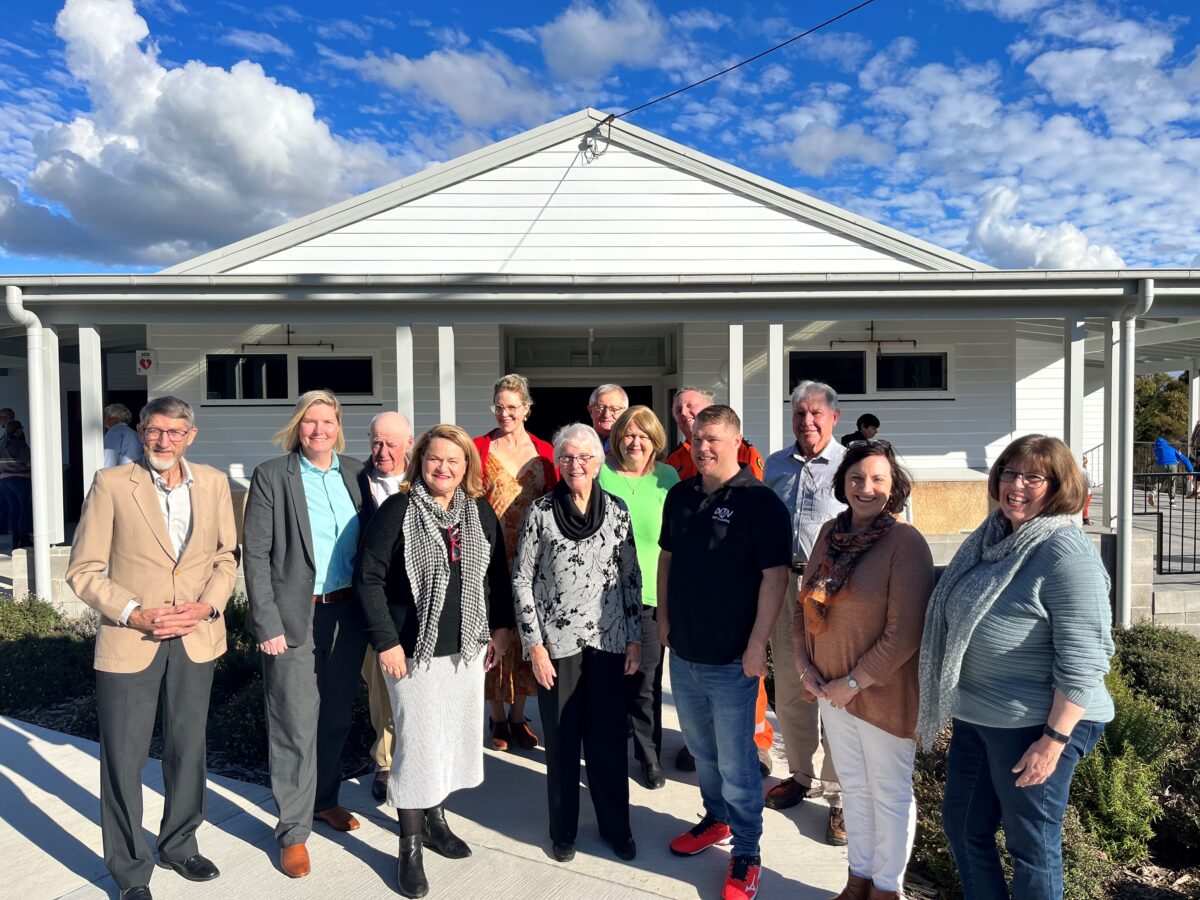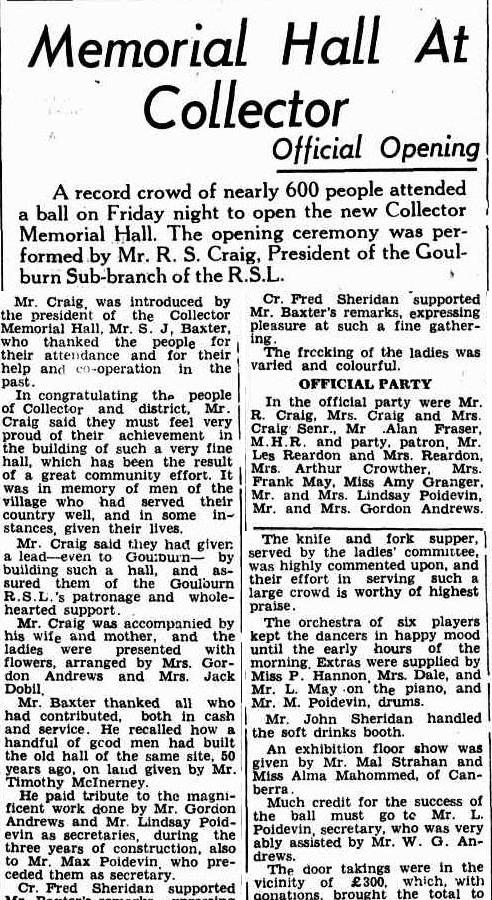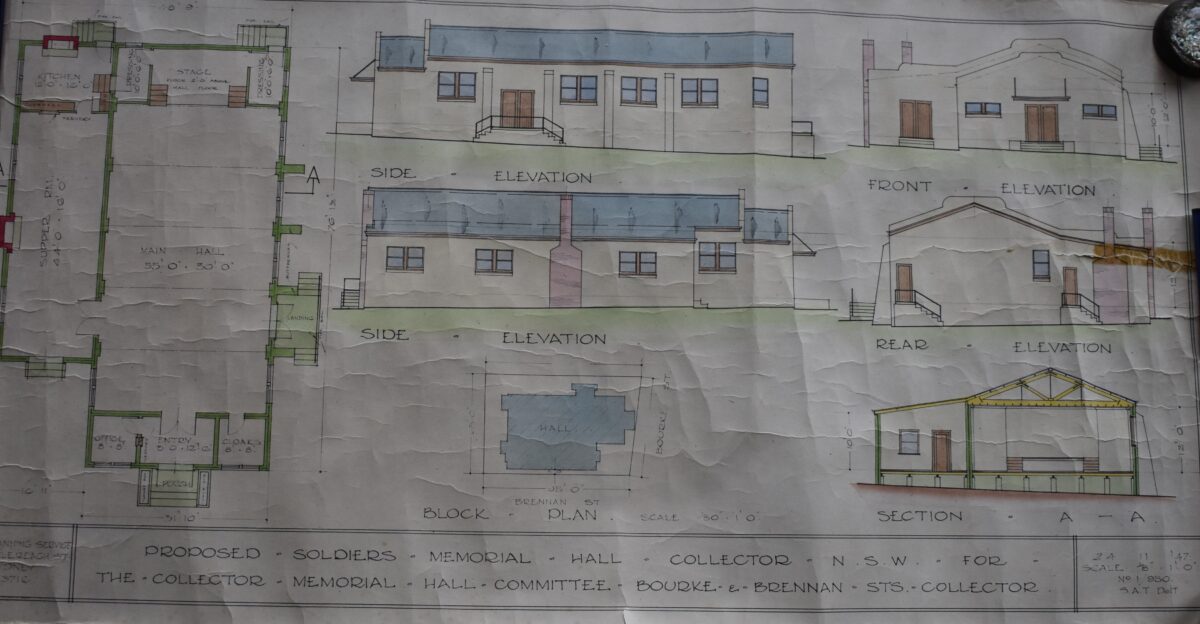
Locals and guests at the reopening of the Collector Memorial Hall, from left, Michael Duck, Alex Waldron, Graham Piestch, Jacqueline Menyhart, Ian Marshall, Penelope Marshall, Gary Poile and Terry Lovelock. Front row: Wendy Tuckerman MP, Denise Duck, Jonathon Taylor, Felicity Poile and Jeanette Sheridan. Photo: Supplied.
Community halls are the lifeblood of rural communities: where people mark everything from celebration to mourning.
Out at Collector, population: 375, locals have been busy with the former, celebrating the completion of work on their community hall, bringing it both back to life as well as providing a safe haven in case of emergency.
Grants from the Federal and NSW Governments, along with a top-up from the Collector Wind Farm and other in-kind support, secured more than $585,000 for the revival of the community hall.
The community gathered to mark the occasion on 3 June to not only celebrate the reopening of a community hub – but the creation of an official emergency evacuation centre for the village, if the need arises.
There’s been a community hall at Collector since around 1896. It was called an assembly hall back then, the place you’d go to catch up with friends if you came into town from the bush, where you’d gather in case of emergency or just stop by for a cuppa if you were too far from your own kettle – and a place to dance. “They had a lot of dances back then,” president of the Collector Memorial Hall Committee, Denise Duck said, “for a very good reason.”
In 1896, a generous farmer, Timothy McInerney, gave a block of land to the village, with plans drawn up by local builder Lee Sheridan for a hall.
At the celebrations last weekend for the reopening, Maureen Poile, daughter of Lee Sheridan, recalled her father telling everyone, often, that although they had the land, the banks refused at the time to lend the community money to build the hall.

From the Goulburn Evening Post newspaper of 17 December, 1952 – big news at Collector. Photo: Trove.
“Maureen said after her father told everyone that they couldn’t get money from the bank, the community had another meeting and decided to raise the money itself – through dances, dances and more dances.
“They ended up raising enough money to pay back everyone who had given money,” Mrs Duck said.
“But by the end, it turned out they were still short, so Leon Reardon, a local farmer, paid it off.”
The village had its hall, everyone who had given money was paid back and, we can only guess, villagers took a breather from all that dancing.
But by the end of World War II, locals decided they wanted to commemorate those men and women who had given their lives for their country, so plans were flagged to build a new one on the site of the old assembly hall. The original facilities could be described as just a little primitive, with drop toilets for women, while the men had to resort to the bushes.
The December 17, 1952 edition of The Goulburn Evening Post published a glowing report of the official opening of the Collector hall as a war memorial, complete with a description of a “knife and fork supper” for 350 people and reports that the “frocking of the ladies was varied and colourful”.
Mrs Duck, who moved with husband Michael to the village from Narrandera in 2008 for a “tree change”, described herself as still a newbie to the village.
“I had been a teacher forever,” she said, “including at St Monica’s at Evatt in Canberra.
“When we came here, my husband joined everything,” she said, “but it wasn’t till I retired that I got involved with the hall committee.”

Th original plan for the post World War II Collector Memorial Hall. Photo: Supplied.
Using her skills, Mrs Duck helped apply for government grants which ended up securing the $585,000 Federal and NSW money to upgrade the Collector Hall. Not only has it been reinvented as the community’s focal point, it is now the designated emergency evacuation point for the village and surrounding areas. New features include a fire suppression system, with the building clad in a fire-resistant material, new disabled access, including paths and ramps and extra water storage in case of emergencies. She said more work needed to be done, including a new kitchen.
Member for Goulburn, Wendy Tuckerman, said the Collector project was not just about constructing important infrastructure – but delivering social and community outcomes.
“Collector is already a vibrant and active village – the new additions to the hall not only look fantastic and will function well for events, but as an emergency meeting point, it is state of the art,” she said.
